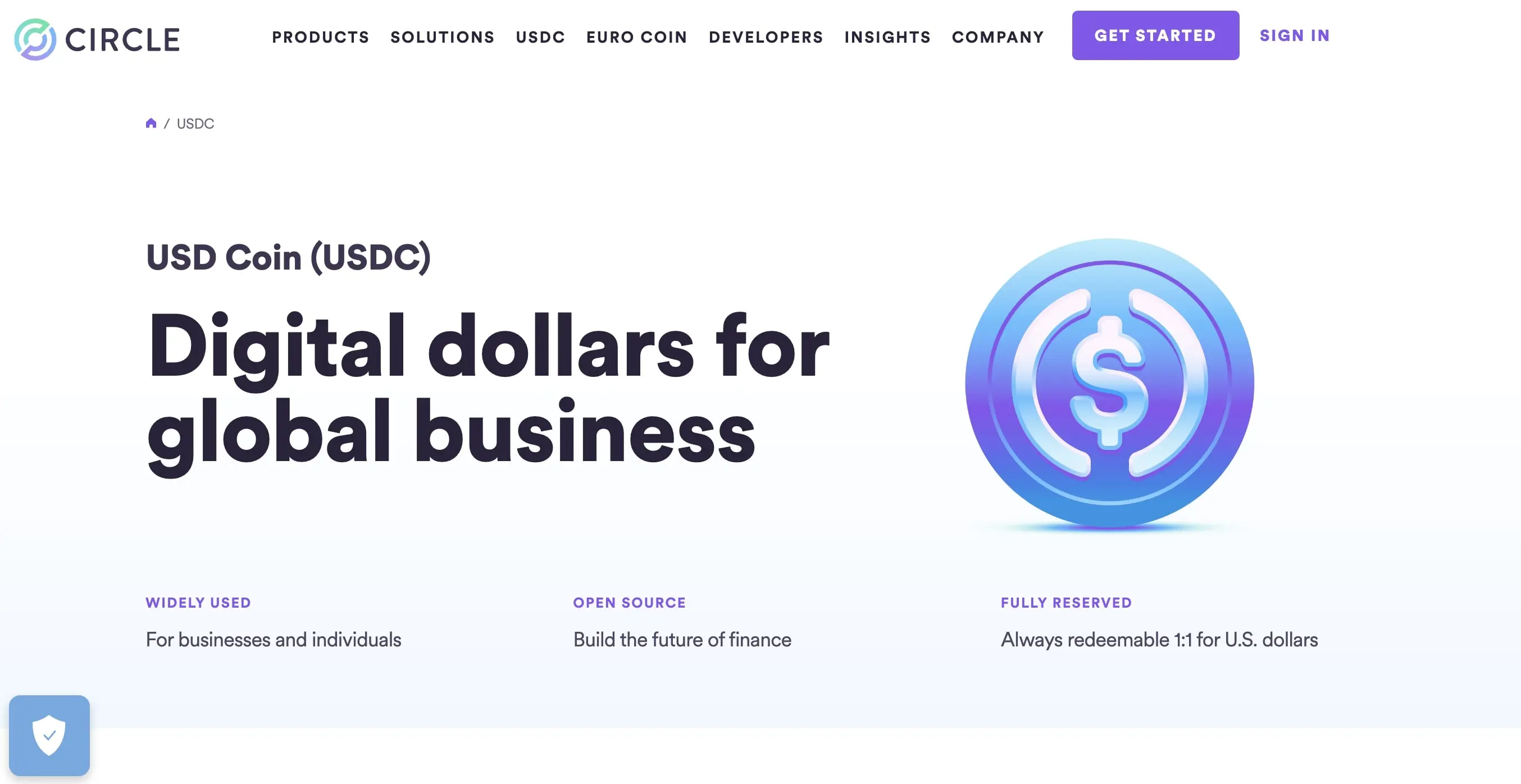Summary: USDC (USD Coin) and USDT (Tether) are the two major stablecoins in the digital asset market, each with its unique attributes and uses. USDC, backed 1:1 by US dollars and regulated in the US, has proven reliable and is a preferred option in the Decentralized Finance (DeFi) sector. It is generally considered safer due to its full collateralization and transparency. USDT, while facing transparency and regulatory challenges, is popular in futures trading and offers higher yield farming rewards due to its increased risk.
What is USDC?
USDC, or USD Coin, is a prominent stablecoin that was developed in a partnership between Circle and Coinbase in 2018. Regulated and secured within the United States' jurisdiction, it maintains a steadfast value equivalence to the US dollar, backed 1:1 by liquid assets such as cash and short-term US government bonds. Since its inception, USDC has demonstrated unparalleled reliability, never once deviating from its pegged value of $1, making it one of the most dependable stablecoins in the digital currency landscape.
As a cornerstone of the Decentralized Finance (DeFi) realm, USDC is particularly noteworthy for its optimal yields and extensive compatibility with leading DeFi platforms. This includes prominent applications such as AAVE, Compound, Solend, Trader Joe, Yearn Finance, and a host of others. It's thus positioned as a preferred stablecoin for users navigating the dynamic world of DeFi, offering them both stability and fruitful opportunities.

What is USDT?
USDT, or Tether, is a widely recognized stablecoin initially introduced by Tether Limited, a Hong Kong-based entity. This digital currency has carved out a significant niche within the landscape of futures trading, becoming a favored choice on established centralized exchanges such as Binance and Bybit. Its broad acceptance underscores its appeal to those frequenting centralized trading platforms.
However, Tether has been confronted with some regulatory headwinds, most notably from the US Department of Justice (DOJ). In one prominent case, Tether was investigated by the DOJ over concerns of bank fraud allegedly committed in its early days. Furthermore, the company's opaque audit history and the delayed provision of transparent information regarding its reserve holdings have ignited concerns within the crypto community. Even though Tether has retained its value and operated securely as a stablecoin, these concerns suggest that users should exercise due diligence when deciding to use it.

What is the Difference Between USDC and USDT?
Both USDC and USDT are notable stablecoins, yet they diverge significantly in terms of safety and regulation. USD Coin is recognized for its rigorous US regulatory compliance and backing by renowned financial entities like JPMorgan Chase and BlackRock, enhancing its safety and dependability. Conversely, Tether, despite its broad adoption, has faced transparency and regulatory issues. Therefore, when it comes to security and clear regulatory status, USDC tends to be the safer option compared to USDT.
USDC vs USDT: Adoption
In determining the optimal stablecoin, one must take into account its degree of adoption across both Decentralized Finance (DeFi) and Centralized Finance (CeFi) platforms. Among stablecoins in the digital asset market, both USDC and USDT command the highest market capitalization, signaling their wide acceptance and compatibility with leading lending applications within the DeFi and CeFi ecosystems.
Both USDC and USDT are uniformly accessible across a variety of blockchain networks, including Ethereum, Solana, Avalanche, Tron, Binance Smart Chain, and more. This cross-chain compatibility allows users to utilize either stablecoin to deposit on notable platforms like AAVE or Compound and generate interest.
However, when it comes to the DeFi space, USDT secures a slight edge over USDC due to its presence on a larger number of applications. Hence, in terms of broader integration with DeFi platforms, USDT emerges as the slightly superior stablecoin.

USDC vs USDT Farming Yields
USDT generally provides higher yield farming rewards on popular DeFi applications like AAVE, Stargate Finance or Compound Finance because it carries increased risk. The consensus amongst investors and farmers is that USDT is more likely to have regulatory issues than USDC, which means there is less USDT value locked in DeFi protocols.
With less value being locked in USDT on applications, it means that users can get a higher yield by providing liquidity and taking on the extra risk. While this may seem like a good idea at first glance, it is important to consider whether the additional risk is worth an extra 1% or 2% in farming rewards. For more information on this, read our best stablecoin interest rates guide.
Is USDC safer than USDT?
USD Coin (USDC) is a fully collateralized stablecoin, implying that each USDC in circulation is backed by an equivalent amount of US dollars held in reserve, ensuring transparency and accountability. Conversely, Tether (USDT) is only partially collateralized, backed by a blend of cash and other assets like loans to associated companies, leading to stability concerns.
Thus, USDC, with its full collateralization and transparent reserve backing, typically appears safer than USDT. Nonetheless, the safety of any cryptocurrency, including stablecoins, is dynamic and influenced by various factors. Therefore, comprehensive research and risk assessment are vital before investing in any cryptocurrency.
Final Thoughts
In conclusion, USDC and USDT are both prominent stablecoins with significant roles in the digital asset market. However, they each present unique opportunities and risks. USDC, backed by the stringent regulation of US authorities and widely adopted in the DeFi space, stands as a safer option, especially for those keen on the stability and transparency offered.
USDT, despite facing regulatory challenges and transparency issues, maintains its position as a preferred stablecoin in futures trading and offers higher yield farming rewards due to its increased risk. Ultimately, your choice between USDC and USDT should depend on your risk tolerance, financial objectives, and platform preferences. As with all investments, comprehensive research and prudent decision-making are essential.









